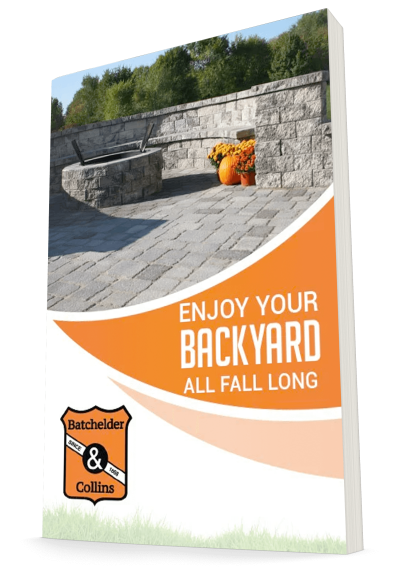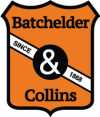How to Drill Into Brick: A Guide

| Many historic homes in Norfolk and Williamsburg, Virginia have brick walls in the interior or exterior. While brick is a strong material that can withstand harsh weather, trying to mount objects into the surface can be a daunting process. You would love to have decorations on the wall, hanging shelves, or exterior lighting and outlets without causing damage or having the objects fall.
Also, there are many different types of brick and orientations to how bricks are stacked that you are worried about picking the right mounting method. One method may be right for one type of brick but not a different one. If you cause brick or mortar damage, you may end up paying for costly repairs. Drilling into brick requires the right tools and know-how to do it correctly. At Batchelder & Collins, we provide brick, blocks, and other masonry products to both residential and commercial customers. Our products can help you complete indoor and outdoor projects with ease. In business for over 150 years, we understand what it takes to mount decorations on brick products. Continue reading this guide so you know how to drill into brick and what tools you need. If you require interior or exterior bricks for your project, we can supply them. Safety First! What Precautions Should You Take Into Account?Working with any type of power tool requires taking the necessary precautions to keep yourself and your surroundings safe from harm. Drilling incorrectly may cause bits of the brick or mortar to fly back into the eyes or face. You may also cause hand injuries if you are not securing the drill bit correctly. Here are several safety precautions to take before you begin the task. Wear Protective GearProtective gear is designed to protect your body that can be harmed by blocking tool components, loud tool noises, and any particles that can get into the eyes, nose, or mouth. Protective gear may consist of a respirator to deal with dust that can irritate the lungs or sinuses when breathed in, as well as gloves to protect the hands from getting scraped when moving across the brick. You should also wear earmuffs and safety glasses to protect your eyes from flying debris and your ears from loud noises. No Baggy ClothingOther protective gear may include tight clothing. Baggy clothes can get in the way when you are trying to place the drill bit into the tool or when operating the drill. The clothing may catch as the drill bit spins. You should also avoid wearing bracelets, necklaces, or having your hair loose around the power tools. Make sure clothing is tight and nothing hangs close to the drilling area or power tools. Use a Drill StandA drill stand is a device that helps steady the drill tool when in operation. The drill fits into the stand to prevent it from slipping. It also helps to create a straight hole without it going sideways. The drill stand is ideal for giving extra support to your hand, especially if you are drilling into walls or overhead Drill Pilot HolesA pilot hole is a hole made using a smaller bit or nail size. The hole is designed as a guide for the larger drill bit. The pilot hole also helps to loosen hard materials, such as brick or wood. When you use the larger drill, it can move into the hole more easily. You will not have to apply as much pressure to push the larger bit into the materials. What Are the Best Tools to Drill Into Brick?Before you purchase drill bits for your power tool, you need to understand that they are not all the same. While there are different drill bit sizes, there are also different types of drill bits. Masonry drill bits are used for bricks, concretes, and other masonry materials. The bits are different from both wood and metal drill bits. Here are the drills to use for masonry projects. Hammer DrillA hammer drill has a mechanism that causes a vibration. This mechanism causes the drill bit to move in a hammering or chipping motion as it uses the vibrations and the spinning of the bit to make the hole. The drill may come cordless or has a cord to hook up to an outlet. Hammer drills are used to make large holes. Rotary Hammer DrillA rotary hammer drill performs similar functions as a hammer drill. It can be used to make large holes in masonry and bricks. The main difference between a rotary hammer drill and a standard hammer drill is the mechanism. The mechanism in this drill causes the bit to go back and forth in a hammering motion while the drill bit is spinning. The bit is driven forward using pistons and air pressure. Regular DrillA regular drill has a drill bit in a chuck that rotates the bit. Unlike rotary hammer drills and regular hammer drills, you have to manually apply pressure to the tool to push the drill bit down into the hole. Regular drills can be used to make medium and small holes in softer materials, yet can also work for masonry. You can find cordless drills and corded drills. Does Orientation of the Brick Matter When Drilling?Brick orientation is how the handyman laid the brick to make the wall. There are six orientation methods. The brick may be laid flat with its widest side down and length side facing forward (stretcher), which is the traditional method. It may lay on its side with the narrowest width down and the length side facing outward (shiner). You may place brick with the thickness (top/bottom) side outward and the length side down (header) or the height side down (rowlock). The last two methods are called sailor and soldier. The brick is stood up as the length side is facing outward (soldier) or the width side is facing outward (sailor). Brick orientation does not matter when doing your home improvement project. You should instead focus on the brick type and where you want to drill the bit into along the brick for the fasteners. These are the types of brick that you may have in your Norfolk or Williamsburg, Virginia home:
Where to DrillNow that you have the protective gear, drills, and bits to use, you may wonder about whether you should drill into the brick or the mortar. Drilling into brick is different from drilling into the mortar. Bricks can normally support a lot of weight due to their solid and hard surfaces. Mortar can support lighter mounted objects, and the holes are a lot easier to repair with more mortar than when you are trying to patch holes in brick. Here are some factors to take into consideration on where to place the drilled holes. Age of the BrickOld bricks will have weaker surfaces. They may crumble, crack, or flake when making bigger holes. Knowing the age of the brick will allow you to figure out if it can withstand the drilling process and act as the necessary support for mounted decorations. Type of BrickBurnt clay bricks and concrete bricks are ideal materials that can handle the drilling process. Sun-dried bricks are the weakest materials and are not suitable for drilling or concrete anchors. For fire bricks, you could drill into the materials, but keep in mind that larger holes will compromise the temperature resistance of the brick. Type of Anchor UsedConcrete screws, self-tapping brick anchors, plastic wall anchors, and expansion-style anchors can be used to mount objects onto bricks. The depth of the anchor will depend on the weight of the mounted object and the required support. Also, some anchors may damage fragile or old types of brick, such as expansion anchors, according to Bob Vila. How Much Weight It Will HoldWeight of the mounted object plays a huge factor on where to drill. A picture frame will be lighter than a television. Consider the weight of the object and the age of the brick to determine where to drill. Size of the HoleKeep in mind that you want as much brick material as possible to remain around the anchor to provide support. If you drill out too much material to make large holes or multiple holes, you begin to compromise the integrity of the brick. This problem can lead to cracking or spalling. How Deep to DrillNever drill too deep into the brick. You can cause the brick to have less integrity to support the anchor or screw. You may also get the drill bit stuck inside, which will require you to dig it out before inserting the anchor. Drilling deep holes also risks the chance of deviating from a straight line, making it difficult for the anchor to go or provide adequate support. Before drilling, you want to measure the wall’s width and the length of the anchor. You also want to make sure there will be nothing in the way of the drill bit, such as wires or pipes. Time For You to Begin DrillingWith all your measurements taken care of, you can now place on your proper safety gear. Next, you can begin drilling into the brick. Here are the steps to perform for this task. Mark the SpotMark the spot along the brick if the brick is new or in good shape, or if the object to be mounted is heavy. Mark the spot on the mortar for deep holes or if the brick is in poor condition. You can use a pencil or marker to make the mark. Select the Depth and Mark the DrillSome products will come with measurements on how deep to make the hole. If you do not have manual instructions about mounting depth, then measure the hole based on the length of the anchor and make the hole slightly deeper than it. Many drills have a drill depth attachment that you can set. If your drill does not have this attachment, you can wrap masking tape around the drill bit to guide it on when to stop. Line it Up PerfectlyPlace the tip of the power drill up to the marker line to line it up. Using the drill stand can also help keep the drill steady and level for the job. Make the Pilot HoleBegin by placing the drill at low speed. You want to use a low amount of pressure to break the surface of the brick. Then increase the speed and pressure when going deeper. You want to move the drill back and forth until reaching the desired depth. Drill the HoleUse a can of compressed air to clear out debris in the pilot hole. Next, you want to use your larger drill bit for the final hole. Align the drill bit to the hole opening. You will not need a lot of pressure as you want to move the drill back and forth until you have the right size and depth for the hole. Alright, So You Cracked the Brick? Let’s Fix ItSometimes the inevitable happens and the brickwork cracks or the drill bit breaks off inside the hole. In that case, you need to remove the drill bit and fix the hole or crack. To fill in the crack, you can use putty or concrete sealer. You want to follow the mixing instructions based on the putty or sealer brand. Next, clean the surface of the brick to remove dust and dirt. Then wet the bricks and wait until they dry. Then use your trowel and force the putty or sealer into the hole or crack. Once the mortar or sealer sets, remove the excess by brushing it off. If you need to remove the bit before fixing the hole, there are several different tools you can use. PliersYou can clamp a pair of pliers onto the part of the bit that is up from the hole. Squeeze the handles together until they lock and pull the bit out. Screw ExtractorA screw extractor is like s screwdriver that allows you to use a regular drill and a manual tool to remove the bit. Make a divot into the center of the bit using a hammer and a center punch. Then insert the drill and use it to make a hole. Place the manual screw extractor tool into the newly created hole and turn it to loosen the broken bit from the brick. Remove the bit from the hole. Prevent Future BreaksTo prevent any more bits from breaking, you want to lubricate the bit using cutting oil. Apply the cutting oil to the tip of the bit. The cutting oil will also prevent overheating. Need More Bricks? We Got You CoveredIn addition to mounting objects into your exterior or interior brick walls, you may want to make some brick DIY hardscape projects on your property. Here at Batchelder & Collins, we provide bricks and other masonry products for your projects. Call us today at (757) 625-2506 or use our contact form to place a masonry order. |
Enjoy Your Backyard All Fall Long

Now is the perfect time to take advantage of autumn’s mild days to prepare your backyard for the cold months ahead. But who’s to say you can’t still enjoy your backyard, spending time with your family, and cooking outdoors all fall long.
"*" indicates required fields


